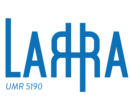Scope note for the class Expression Creation – F28 Back
Candidate
Scope note
- Text
This class comprises activities that result in instances of F2 Expression coming into existence. This class characterises the externalisation of an Individual Work.
Although F2 Expression is an abstract entity, a conceptual object, the creation of an expression inevitably also affects the physical world: when you scribble the first draft of a poem on a sheet of paper, you produce an instance of F4 Manifestation Singleton; F28 Expression Creation is a subclass of E12 Production because the recording of the expression causes a physical modification of the carrying E18 Physical Thing. The work becomes manifest by being expressed on a physical carrier different from the creator’s brain. The spatio-temporal circumstances under which the expression is created are necessarily the same spatio-temporal circumstances under which the first instance of F4 Manifestation Singleton is produced. The mechanisms through which oral tradition (of myths, tales, music, etc.) operates are not further investigated in this model. As far as bibliographic practice is concerned, only those instances of F2 Expression that are externalised on physical carriers other than both the creator’s brain and the auditor’s brain are taken into account (for a discussion of the modelling of oral traditions, see: Nicolas, Yann. ‘Folklore Requirements for Bibliographic Records: oral traditions and FRBR.’ In: Cataloging Classification Quarterly (2005). Vol. 39, No. 3-4. P. 179-195).
It is possible to use the P2 has type (is type of) property in order to specify that the creation of a given expression of a given work played a particular role with regard to the overall bibliographic history of that work (e.g., that it was the creation of the progenitor expression on which all other expressions of the same work are based; or that it was the creation of the critical edition that served as the basis for canonical references to the work).
- Language
- en




Comments
No comment found.